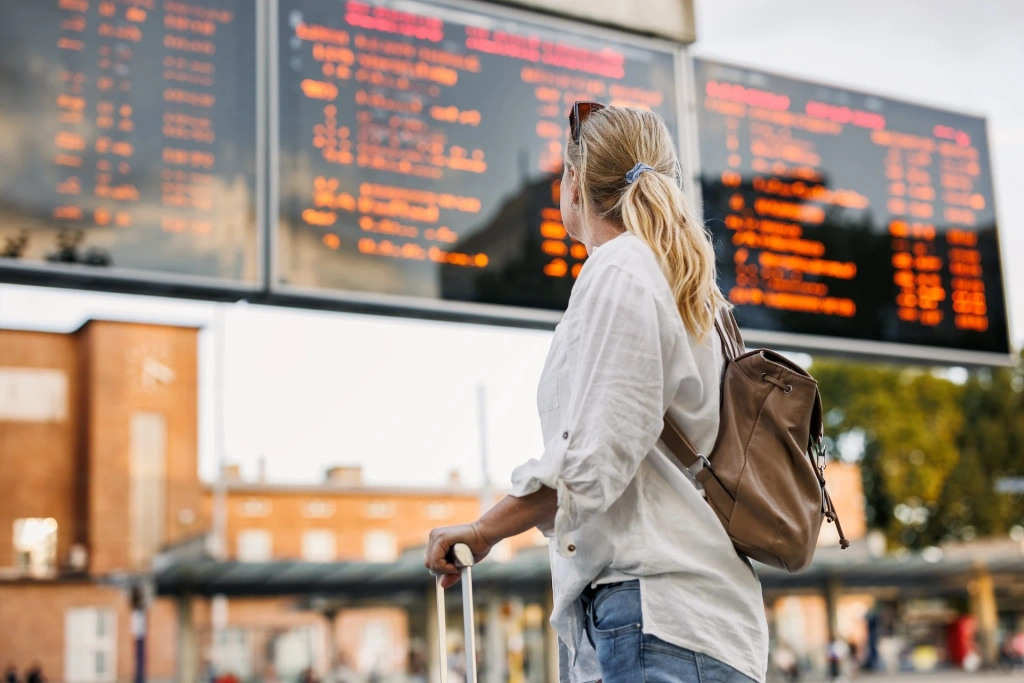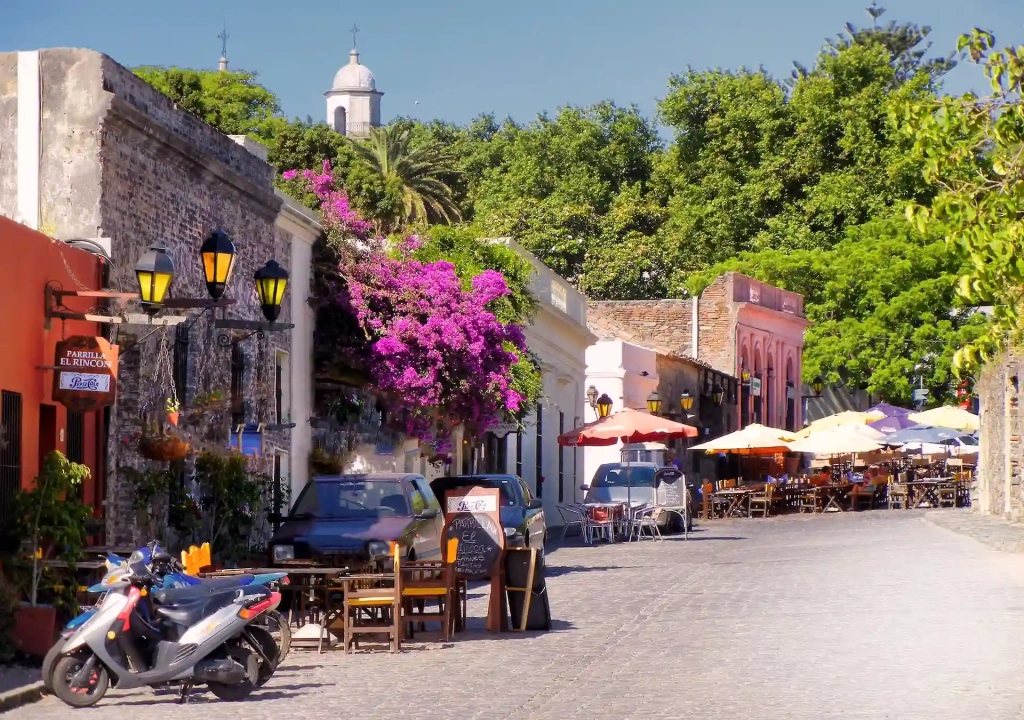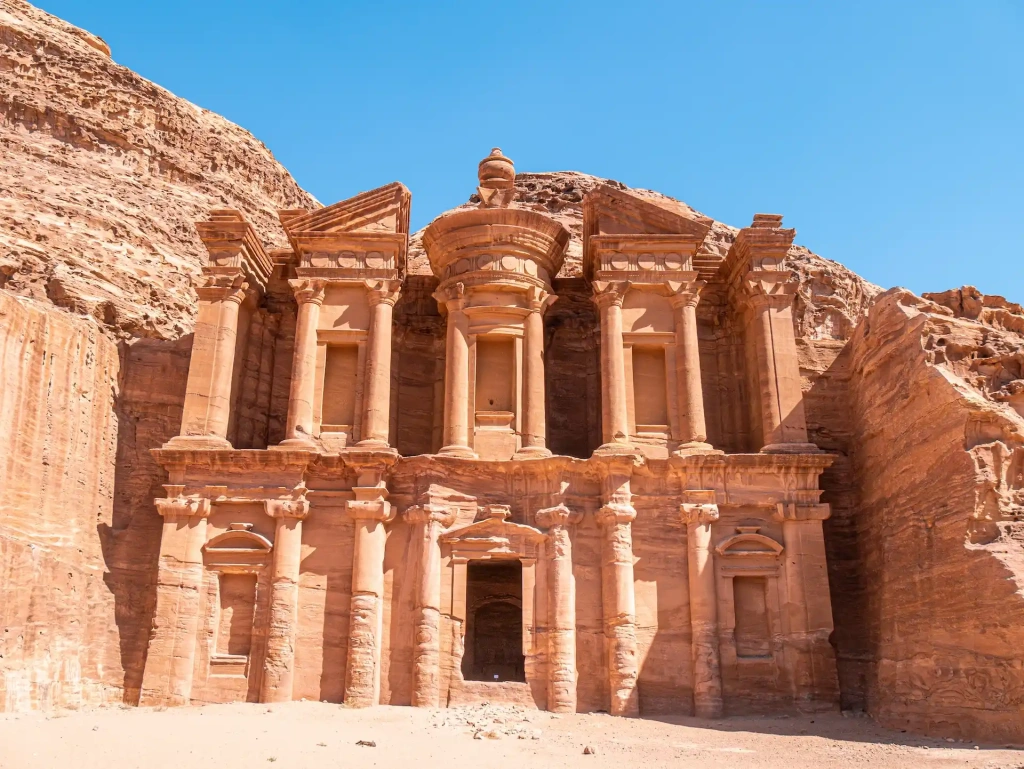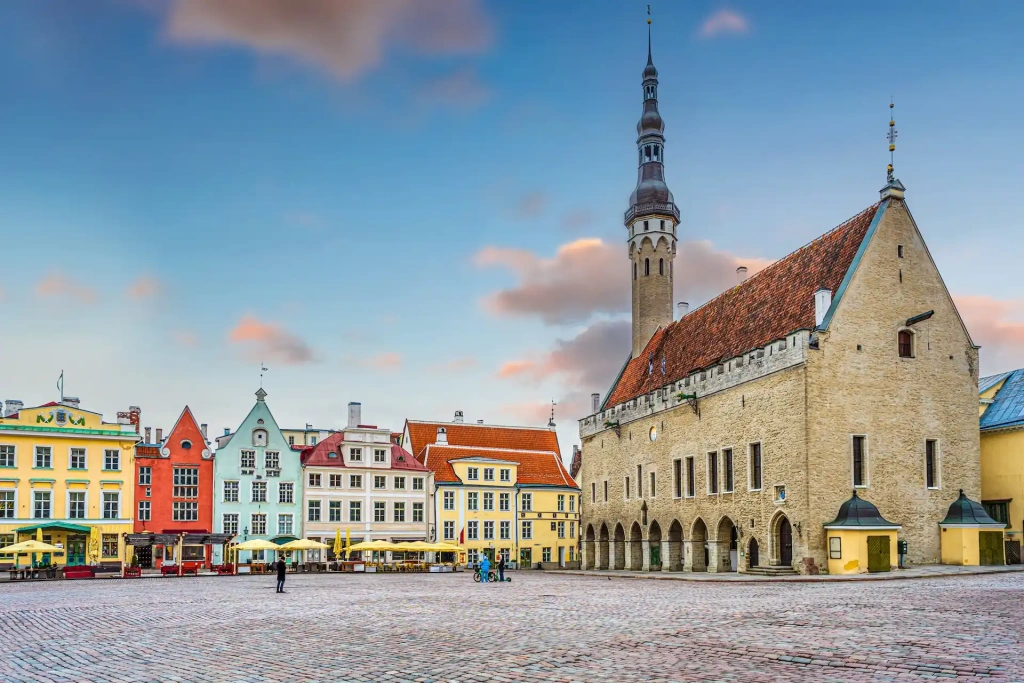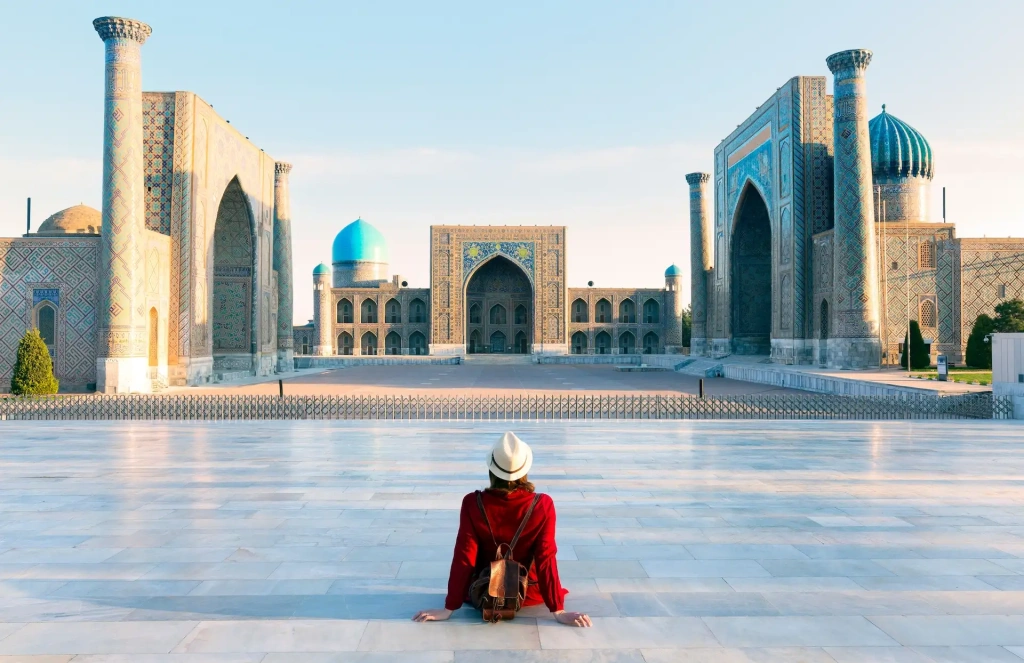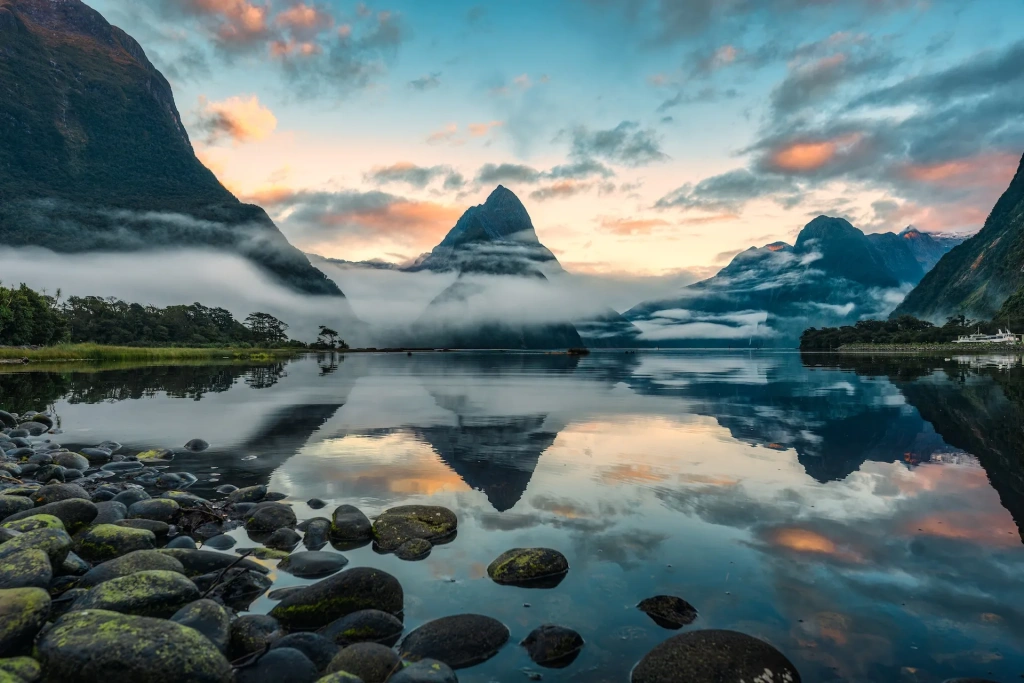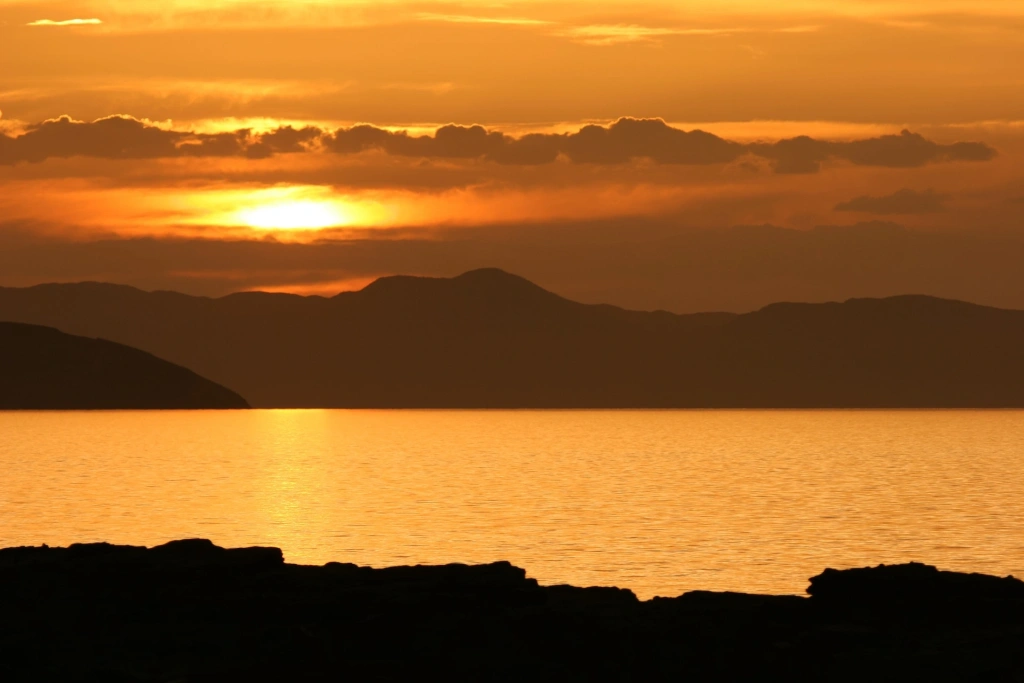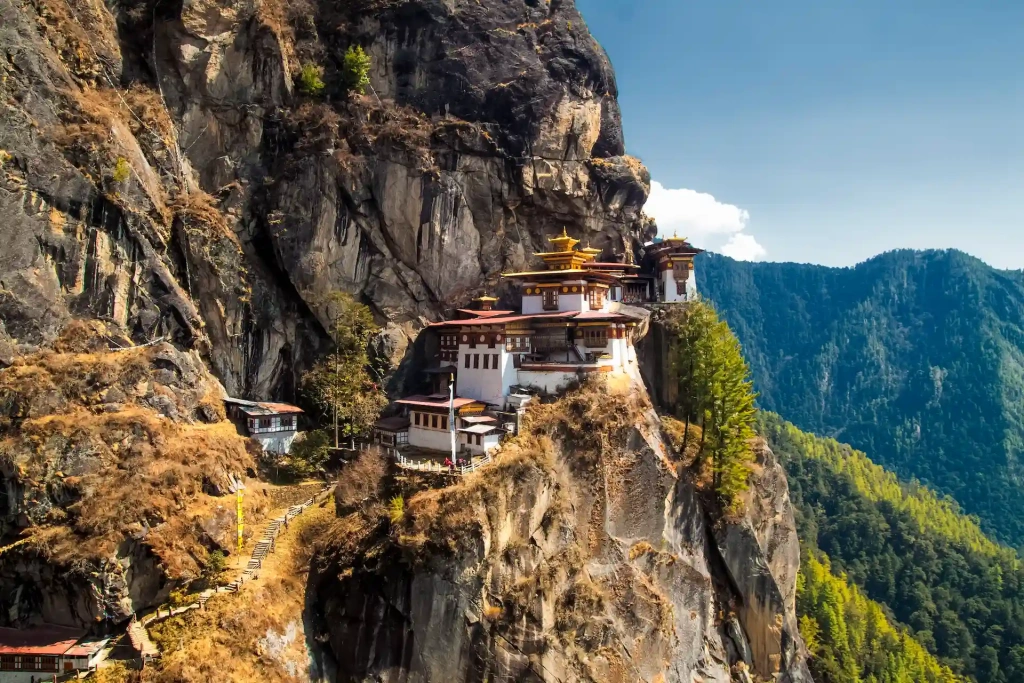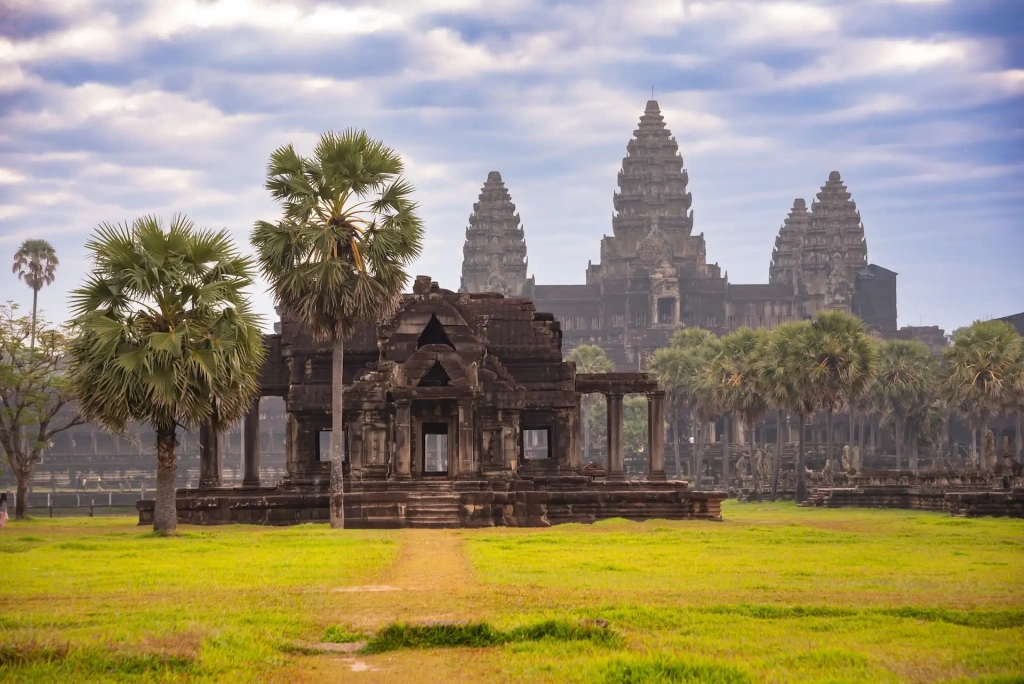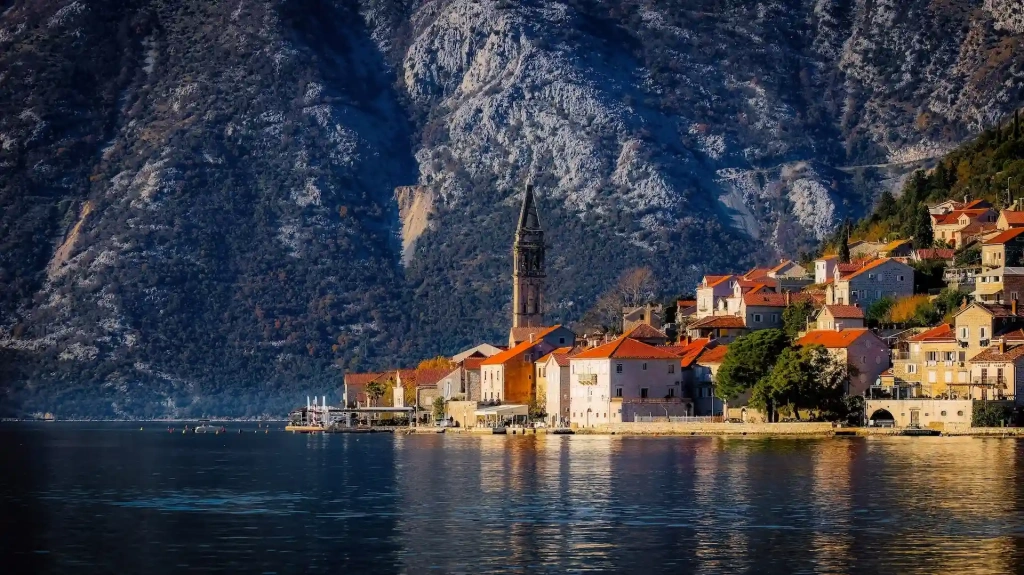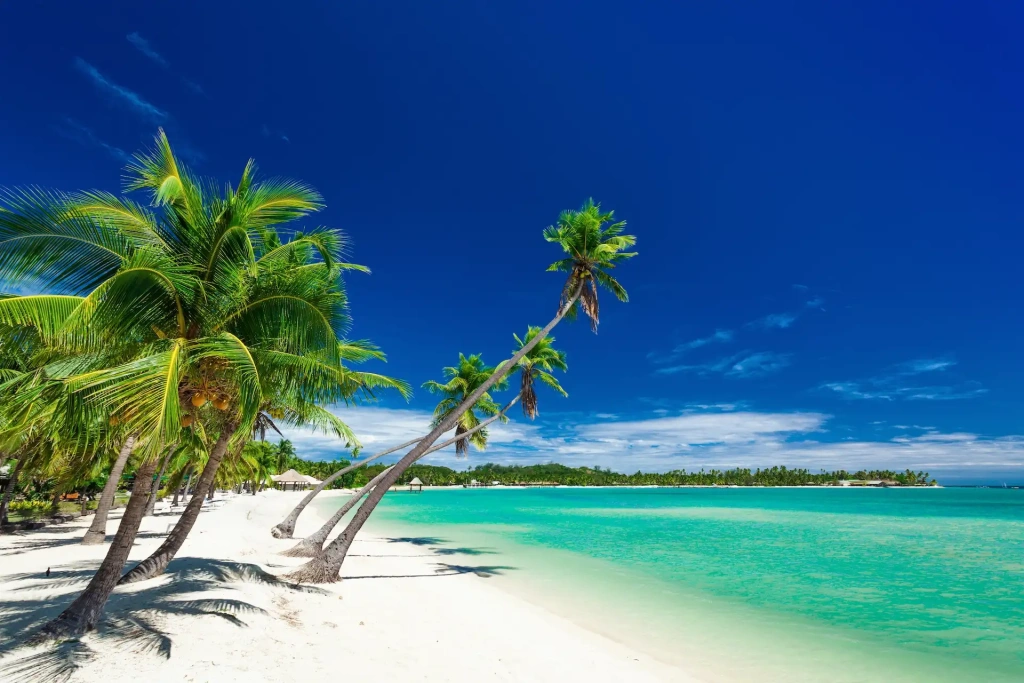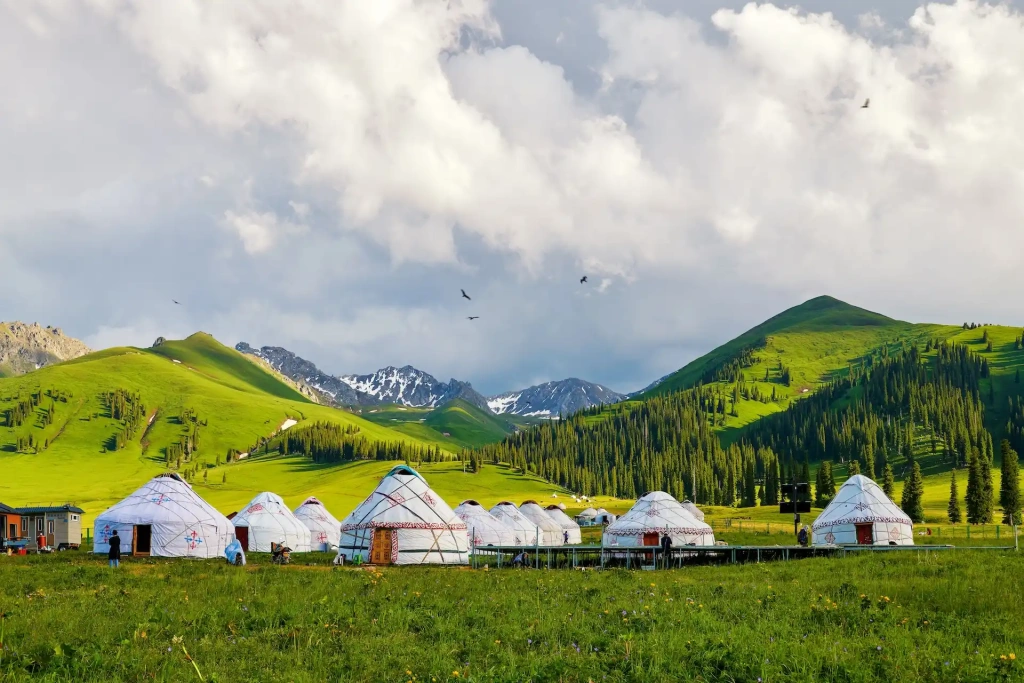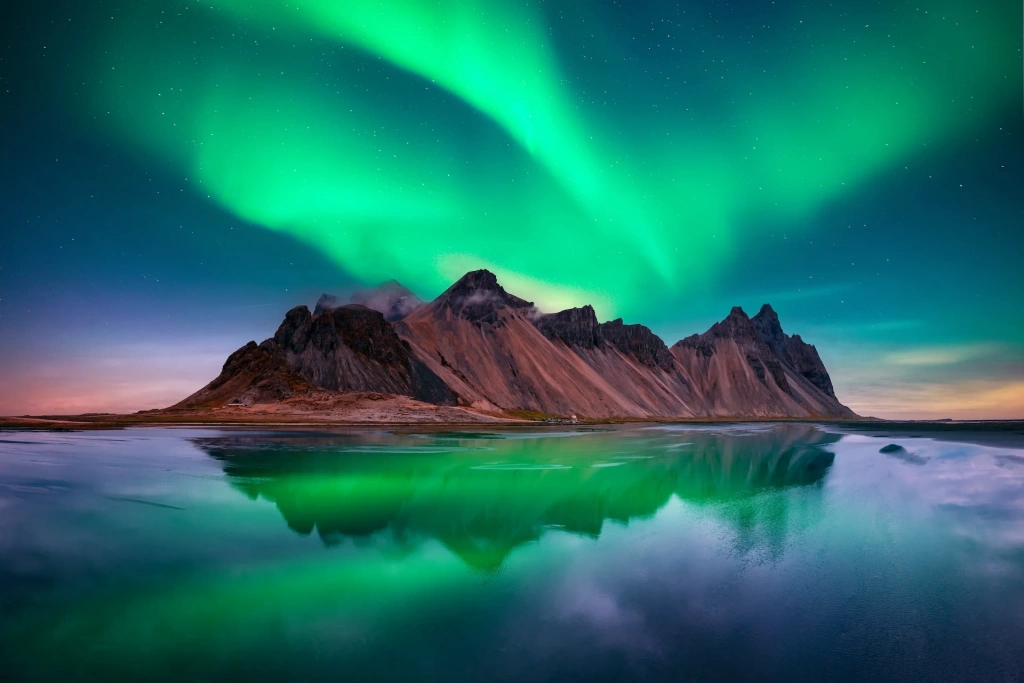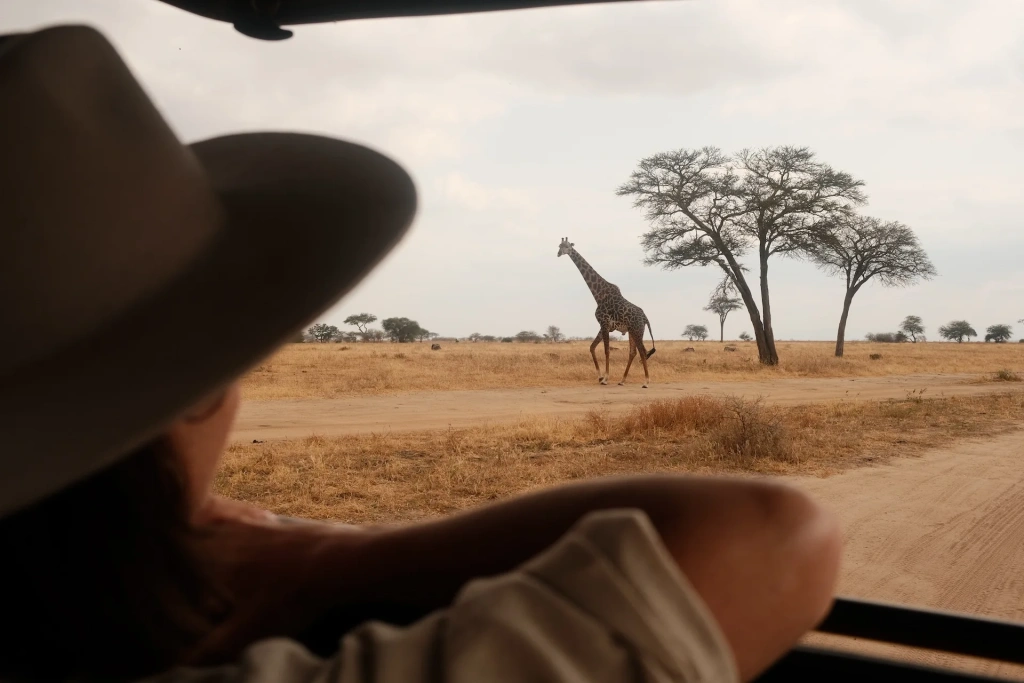Solo travel for women is on the rise, with about 40% of female travelers in 2025 planning to embark on solo trips — an 8% increase from last year, according to marketing firm Future Partners. Experts predict this trend will continue to grow as more women seek independence, adventure, and personal growth. To help, the Altezza Travel team has curated a list of epic destinations for solo female travelers around the world.
1. Uruguay – South America’s safest destination
This small country, roughly the size of England, often lives in the shadow of its larger neighbors, Brazil and Argentina. Anthony Bourdain, the American travel documentarian, once said to National Geographic that Uruguay is underrated outside Latin America. Every Argentinian, however, “knows how cool it is because they fill the place up during the season.”
The historic center of Uruguay’s capital, Montevideo, charms visitors with its cobblestone squares, elegant churches, and art deco mansions whose weathered façades add to the city’s allure. Set along the Atlantic coast, Montevideo’s seaside districts, Pocitos, Buceo, and Malvín, offer a relaxed atmosphere ideal for solo female travel adventures.
In 2015, UNESCO named Uruguay’s capital one of its Creative Cities in recognition of its rich cultural heritage, referring to it as the “Athens of the Rio de la Plata.” Another Uruguayan gem, Colonia del Sacramento, is also on UNESCO’s World Heritage List. Founded by the Portuguese in 1680, the city is celebrated for its beautifully preserved colonial architecture.
Uruguay is known as a progressive and open-minded country, often dubbed the “Switzerland of South America” for its strong democratic traditions. It ranks 48th on the Global Peace Index and is listed among the 20 safest countries for women, according to Global Citizen Solutions.
- Don’t miss: the Mercado del Puerto market in Montevideo, horseback rides with gauchos (Uruguayan cowboys) across the pampas, and local wine cellars that can rival Chilean and Argentine wines.
- Cultural highlight: in Montevideo, mate — the herbal drink made from yerba mate leaves — is even more popular than coffee.
- Interesting fact: Jose Mujica (called “the world’s poorest president” by the BBC as he lived on a farm and cut his own salary down to $1,000 per month) once said: “Those who need too much are never satisfied.” In a way, that’s true — in Uruguay, travelers need very little to feel happy.
2. Jordan – ancient wonders and warm hospitality
Jordan has so many cultural layers that even its most famous attractions have something new to offer. Take the Wadi Rum desert, for example, the filming location for Star Wars. You can visit to marvel at its otherworldly, Mars-like landscapes or to meet the Bedouins, whose deep-rooted traditions of hospitality and warmth toward guests remain an essential part of life.
Jordan is also one of the safest countries in the Middle East. According to the UN, it records only 0.6 serious crimes per 100,000 residents — a rate comparable to that of Switzerland, Norway, or the United Kingdom. Numbeo also ranks Jordan as a country with a low crime rate, making it one of the best countries for women traveling alone.
- Classic route: Explore the cliff city of Petra, the coral reefs of the Gulf of Aqaba, and the ancient King’s Highway (4th century BCE). Once traveled by Roman legions and later by pilgrims to Mecca, today it links many of Jordan’s main attractions.
- Don’t miss: Diving in Aqaba, spending a night in a Bedouin camp in Wadi Rum, and visiting the Umayyad Palace.
- Cultural highlight: Queen Rania, often described by Vogue as an icon of elegance and style, is known for appearing in public with her head uncovered. While travelers aren’t expected to follow her example, modest clothing is recommended.
- Cultural bonus: Jordan’s capital, Amman, may appear unassuming at first glance as its map is dotted with uniform, sand-colored districts. To get a feel for modern Amman, head to Jabal Amman. You’ll find independent bookstores, souvenir shops, and vintage cafés popular with the city’s creative crowd. According to Tatler, even King Abdullah II and Queen Rania occasionally dine at one of the neighborhood’s restaurants.
3. Estonia – safe, modern, and full of medieval charm
More than half of Estonia is covered by forests, while the capital, Tallinn, is home to a third of the country’s population. The rest of the population lives in small towns, villages, and farmsteads nestled among the same forests. Yet it would be wrong to think of Estonia as just a rural European province.
Tartu, the European Capital of Culture 2024, has hosted a university since the 17th century, producing many brilliant minds. Among them are Nobel laureate in chemistry Wilhelm Ostwald and writer and lexicographer Vladimir Dal. Tallinn, meanwhile, was once a prosperous city of the . Today, its historic center, filled with well-preserved medieval structures, is considered one of the most captivating in Northern Europe.
Tallinn’s Old Town is a must-see in every guidebook, but there’s plenty to explore beyond its medieval walls. Take Soomaa National Park along the Pärnu River, for example. In March and April, the river floods, submerging roads and turning the area into a canoeing adventure. Locals call this period the “fifth season.”
The city of Pärnu comes alive in late spring and summer. A promenade opens along the bay, and beach bars offer so much entertainment that Lonely Planet has dubbed it the “Ibiza of the north.” Estonia also ranks 24th on the Global Peace Index, higher than Spain, the United Kingdom, Norway, Italy, Sweden, and many other countries.
- Classic route: Tallinn’s Old Town, the University of Tartu, and Soomaa National Park.
- Don’t miss: Art museums and the bohemian Kalamaja district in Tallinn, Narva Castle on the banks of the Narva River, windmills and farms on Saaremaa Island, and leil, traditional Estonian saunas.
- Local features: Like other Northern European countries, Estonia observes the “everyman’s right,” which allows people to walk, camp, and gather natural resources nearly anywhere, even on private land.
4. Uzbekistan – discover Central Asia’s hidden gem
Just a few years ago, Uzbekistan was one of the most challenging destinations for tourists. In the largest country in Central Asia, people struggled to exchange currency at the official rate, authorities prohibited photography in the Tashkent metro, and travelers had to register at hotels to buy train tickets.
Today, Uzbekistan is rapidly opening up, becoming an ideal destination for responsible solo travel. Citizens of 75 countries, including EU members, can visit visa-free for up to 30 days. International brands are arriving, and global stars now perform concerts in the capital. The country is also quite safe: according to the Travel Safe ranking, which analyzes public sources and police statistics, Uzbekistan ranks 40th (compared with France at 64th).
Uzbekistan is a land of contrasts. In Tashkent, modern IT incubators and anti-cafés sit alongside the traditional Old Town. In the Fergana Valley, farmers grow rice for plov while factories assemble Chevrolet cars, and south of Samarkand, blue-eyed mountain villagers consider themselves descendants of Alexander the Great’s warriors.
- Classic route: Registan Square and Russian colonial architecture in Samarkand, the museum city of Khiva, Soviet modernist buildings in Tashkent, and the Old Town in Bukhara.
- Don’t miss: The Savitsky Museum in Nukus, ancient fortresses and “Towers of Silence” near the Aral Sea, and the Shukhov Tower in Bukhara.
- Cultural bonus: Uzbeks are very friendly but not intrusive. In historic neighborhoods, a foreigner may be invited for tea or even to visit someone’s home — part of local etiquette, similar to small talk in the West. A polite refusal, even if repeated, is never considered rude.
5. New Zealand – the ultimate adventure for independent travelers
New Zealand consists of two main islands, North and South, along with around 600 smaller islands. The North Island, home to the capital, Wellington, and the country’s largest city, Auckland, is known for its cultural attractions, volcanoes, and green alpine meadows. The South Island boasts the peaks of the , dramatic fjords, and scenic beaches.
New Zealand’s Māori name, Aotearoa, translates to “the land of the long white cloud.” Visitors can experience Māori traditions and vibrant rituals at Lake Taupo, the sacred Waipoua Forest, or the Museum of New Zealand Te Papa Tongarewa in Wellington.
With well-developed tourist infrastructure, a very low crime rate, and an extensive network of hiking trails, New Zealand is ideal for independent travel. Global Citizen Solutions, which ranks the best countries for relocation, calls it an ideal destination for solo female travelers.
- Classic route: The Sky Tower and art museum in Auckland, hiking near Castlepoint Lighthouse northeast of Wellington, and the Waipoua Forest Nature Reserve, home to Tāne Mahuta, a tree around 2,000 years old.
- Don’t miss: Stargazing in the Mackenzie region, kayaking in Fiordland, and visiting Rakiura National Park, where you can hear the kiwi bird, a national symbol.
- Local features: New Zealand is bilingual, with most signs and road markings also in Māori. The road network is well developed, but outside Auckland and Wellington, roads narrow to two lanes and wind through the landscape, often making cruise control unusable.
- Cultural bonus: The areas around the Tongariro and Ruapehu volcanoes, the Waikato River, and the town of Queenstown on the South Island remain popular with Lord of the Rings fans. They are breathtaking even without any connection to the films.
6. Kenya – safari adventures and vibrant culture
Kenya is long associated with safaris, but the country has much more to offer than its national parks. Vibrant Nairobi boasts a rich cultural scene, while Mombasa and Diani combine sandy beaches with Swahili culture, shaped by African, Arab, and European influences. Inland, trekking and climbing opportunities abound: the forested slopes of Mount Kenya, Africa’s second-highest peak after Kilimanjaro, offer trails for both beginners and experienced hikers.
By African standards, Kenya is a prosperous country, with developed infrastructure, a wide range of hotels and hostels, and widespread use of English. Travel Safe ranks Kenya as relatively safe for travelers. To ensure a smooth trip, it’s best to use official taxis in cities, avoid walking at night, and keep money and valuables out of sight.
- Classic route: Masai Mara Reserve, Amboseli National Park, and Mount Kenya.
- Don’t miss: Lake Turkana, the town of Lamu with its traditional architecture, and the Portuguese fort in Mombasa.
- Cultural bonus: In Kenya, like in Tanzania, you can hear the phrase made famous by Timon and Pumbaa from The Lion King: “hakuna matata,” which translates to “no worries.”
7. Bhutan – ancient temples and stunning nature
This small kingdom, nestled between India and China, is very safe for solo female travelers. By law, foreign tourists must be accompanied by local guides arranged through tour operators. Additionally, Bhutan charges a sustainable development fee of $100 per day for foreigners, a measure designed to protect nature and culture while limiting the impact of mass tourism.
Bhutan is welcoming year-round. In December and January, hundreds of black-necked cranes winter in the Phobjikha Valley. In spring, the mountains bloom with blue alpine poppies, one of Bhutan’s national symbols. Summer brings the 348-kilometer (216 mi) Snowman Trek, famous for its dramatic elevation changes, stunning landscapes, and the opportunity to experience the culture of mountain communities.
Autumn is festival season, often marking the end of the harvest, which is perfect for a solo female adventure. National Geographic recommends attending the Thimphu Tshechu and Paro Tshechu festivals to witness cham, a vibrant Buddhist ceremony featuring masked dances.
- Classic highlights: The Paro Tsechu Buddhist festival, the Paro Taktsang Monastery perched on a cliff, and Jomolhari, a 7,000-meter (22,966 ft) peak considered sacred in Tibetan Buddhism.
- Local features: In 1972, Bhutan’s fourth king, Jigme Wangchuck, declared that the happiness of the people is more important than GDP. The kingdom’s constitution reflects this, stating that the government’s primary duty is to ensure the well-being of every citizen. In 2022, 48.1% of Bhutanese described themselves as happy, 45.5% as “somewhat happy,” and 6.4% as unhappy.
8. Cambodia – affordable, authentic, and surprisingly safe
Cambodia’s history encompasses both the ancient Khmers, who built the iconic Angkor Wat, and the Khmer Rouge, whose regime left a legacy of dictatorship and terror. The country also endured three decades of wars and conflicts in the 20th century, the impacts of which are still felt today. Yet Cambodia draws tourists from around the world, not only to see Angkor but also to enjoy the beaches of Sihanoukville, Koh Rong Island, and the floating villages on Tonle Sap Lake. Visitors can experience lively nightlife, explore tropical jungles, go snorkeling or diving, and immerse themselves in local culture.
Condé Nast suggests that Cambodia captures the true charm of Southeast Asia. Solo traveler and blogger Bea Maytiner, who has explored dozens of countries alone, describes Cambodians as surprisingly respectful, caring, and kind. She notes that while Cambodia may have few perfect things, it offers an abundance of authentic and vibrant experiences.
- Classic set: The Angkor Wat temple complex, circus performances in Siem Reap, Ta Prohm temple, and the Royal Ballet of Cambodia.
- Don’t miss: Freshwater dolphins in the Irrawaddy River estuaries and Bassac Street in Phnom Penh.
- Local features: Cambodia’s official currency is the riel. However, due to its fluctuating value, the US dollar is widely used in daily transactions and serves as the country’s de facto second currency.
9. Montenegro – a Mediterranean gem for relaxed solo travel
Former Montenegrin Prime Minister Dritan Abazović boldly called it the most beautiful country in the world — and there’s some truth to that. In a nation small enough to fit within the borders of Beijing, breathtaking sights abound. There are the atmospheric capital Podgorica, the coastal towns of Budva and Ulcinj, the picturesque northern mountains, and Lake Skadar, where giant curly pelicans soar overhead.
This visual diversity feels surprisingly cohesive. Even seemingly contrasting elements blend seamlessly, like Orthodox traditions and contemporary art. In Podgorica’s Cathedral of the Resurrection of Christ, for instance, a fresco depicts Marx, Engels, and Yugoslav Marshal Josip Broz Tito engulfed in hellfire.
The relaxed lifestyle of Montenegrins is a cultural hallmark, exemplified by the local habit of sipping coffee mixed with rakia throughout the day. Montenegro is also relatively safe, ranking 34th on the Global Peace Index — above Sweden, South Korea, Greece, and the United States.
- Classic route: Ostrog Monastery, the beaches and promenade in Budva, and the cultural capital, Cetinje.
- Don’t miss: The Bay of Kotor, the concrete arch of Đurđevića Tara Bridge over the Tara River, and kayaking on Lake Skadar.
- Local features: Montenegro hosts laziness championships, where participants must remain lying down. They are allowed only to use a smartphone and occasionally visit the restroom.
10. Fiji – friendly islands and safe beaches
Located in the South Pacific, Fiji is an archipelago of over 330 islands across 14 provinces. Each island has its own traditions, cuisine, dialects, and unique beliefs.
Fiji combines untouched nature, countless white-sand beaches, and genuine hospitality. The islands radiate a sense of calm and safety, with locals who are generally friendly and welcoming. This spirit is reflected in the most common Fijian word, “bula,” which serves as a greeting, a wish of goodwill, and an expression of genuine joy.
Another reflection of the islands’ relaxed vibe is the phrase “Fiji time,” originating on Taveuni Island, where the 180th meridian, the International Date Line, passes. To the east, it’s still yesterday; to the west, it’s already today. Time here is flexible, and being an hour or two late is never considered a problem — there’s simply no need to rush.
- Don’t miss: Experiencing the rich culture of Fijian tribes, diving with reef sharks, and island-hopping.
- Local features: One expression of Fijian happiness is drinking kava. This beverage is made from the root of a plant that, according to Fiji’s Ministry of Health, helps reduce anxiety and promotes relaxation. Kava is served in a bilo, a bowl carved from half a coconut. Before drinking, guests clap once and loudly say “Bula!”
- Cultural bonus: Fiji faces real environmental challenges, including coastal erosion, damage to coral reefs, and plastic pollution. The country recently launched the Loloma Hour initiative. During the hour, tourists can spend 60 minutes learning about Fijian culture, cleaning mangroves, or planting coral. “Loloma” means a selfless act filled with love.
11. Mongolia – wide skies and wilder hearts
The first thing you notice in Mongolia is its vastness. This is hardly surprising for a country nearly the size of Western Europe with only about 3 million residents. Half of them live in Ulaanbaatar, the capital and Mongolia’s only true metropolis.
Genghis Khan is the figure most commonly associated with Mongolia. His name appears on the airport, banknotes, and in bronze: a 40-meter (131 ft) statue stands in Tsongin Boldog, 54 km (34 mi) from Ulaanbaatar. Nevertheless, the statue is administratively considered part of the capital. Traveling across Mongolia feels more like an expedition than a typical sightseeing trip. Visitors are drawn to Gorkhi-Terelj National Park, with its granite cliffs and nomad camps; the Altai Tavan Bogd mountain range, with high-altitude lakes and glaciers; and Lake Khövsgöl, often called the younger brother of Baikal.
Mongolia ranks 37th on the Global Peace Index, alongside Sweden and Poland. Travel Safe also gives it a favorable rating: most risks, including fraud, theft, and armed violence, are considered low. Solo female travelers should avoid going out after dark outside the capital and be mindful of the language barrier. English is widely understood in Ulaanbaatar, but in rural areas, only Mongolian and, occasionally, Russian are spoken.
- Classic route: The Naadam Festival, the Genghis Khan Statue, sunrise in the Gobi Desert, and the ancient Chinggisid capital, Karakorum.
- Don’t miss: Spending a night in a traditional Mongolian yurt, the Flaming Cliffs — a mountain range with bright orange rocks — and Lake Khövsgöl, Mongolia’s deepest lake.
- Local features: In Mongolia, it is considered impolite to wave goodbye, as it may imply ‘don’t return.’
12. Iceland – fire, ice, and total peace of mind
American writer and traveler John Ross Browne, who visited Iceland in 1865, described Reykjavik, the island’s capital, as “the fag-end of civilization, abounding in horrible odors of decayed polypi and dried fish.” Today, 160 years later, Iceland is far more appealing to travelers: from September 2024 to July 2025, over 1.8 million tourists visited the island.
Iceland’s natural wonders are breathtaking everywhere. Highlights include Thingvellir National Park, home to a tectonic rift, the Geysir Valley, and the glacial lagoon Jökulsárlón. Reykjavik itself offers a different appeal: instead of grand squares, historic palaces, or wide avenues, the city is minimalist, compact, and easy to explore on foot.
The main challenge for solo female travelers is the high cost of travel. Travel Safe considers Iceland very safe overall, but notes that some operators, tourist areas, and taxis may charge inflated rates. In the 2025 Global Peace Index, Iceland ranks first.
- Classic route: The Geysir Valley, Gullfoss Waterfall, and Thingvellir National Park near Reykjavik, plus Reynisfjara Beach with its black volcanic sand.
- Don’t miss: The Northern Lights in eastern Iceland (best viewed February–March and September–October), geothermal hot pools in Reykjavik, and the glacial lagoon Jökulsárlón.
- Local features: Iceland’s weather can change rapidly, so follow forecasts and official alerts. Plan your budget carefully: food and transportation are more expensive here than the European average.
13. Tanzania – from Serengeti sunsets to Zanzibar sands
Tanzania offers everything travelers seek in Africa, and almost none of the usual stereotypes. The country is home to some of the continent’s largest safari parks, the most famous being the Serengeti in the northwest, where visitors can witness the Great Wildebeest Migration.
Another natural highlight is Mount Kilimanjaro, Africa’s highest peak, which inspired one of Ernest Hemingway’s famous short stories. Despite its height of 5,895 meters (19,341 ft), the climb doesn’t require professional training. A climb typically takes 6–8 days, passing through five distinct climate zones: cultivated land, rainforest, heather moorlands, alpine desert, and finally the glacial arctic zone.
For tranquil beach holidays, travelers head to Mafia, Pemba, and Tanda islands. Those seeking a mix of colonial city streets and vibrant nightlife visit Zanzibar, home to Stone Town, renowned for its unique blend of Arab, Indian, and Swahili cultures.
- Classic route: safaris in the Serengeti, Ngorongoro, and Tarangire National Parks, climbing Kilimanjaro, and exploring Zanzibar beaches and historic center.
- Don’t miss: the historic town of Bagamoyo on the Indian Ocean coast, the mystical Lake Natron with its reddish waters, and day trips to Arusha’s natural attractions.
- Local features: in Tanzania, women often wear colorful kanga cotton wraps. Their distinctive feature is the Swahili inscriptions printed on them: proverbs, aphorisms, or witty sayings. Locals exchange kangas on special occasions, and the texts on them often express affection, humor, or gentle irony.

13 countries for solo female travelers: in brief
(GPI-2025 rating)
$2800
$2500
$100
$3100
$2100
$4200
$1600
$2400
$3200
$540
$4200
All content on Altezza Travel is created with expert insights and thorough research, in line with our Editorial Policy.
Want to know more about Tanzania adventures?
Get in touch with our team! We've explored all the top destinations across Tanzania. Our Kilimanjaro-based adventure consultants are ready to share tips and help you plan your unforgettable journey.















